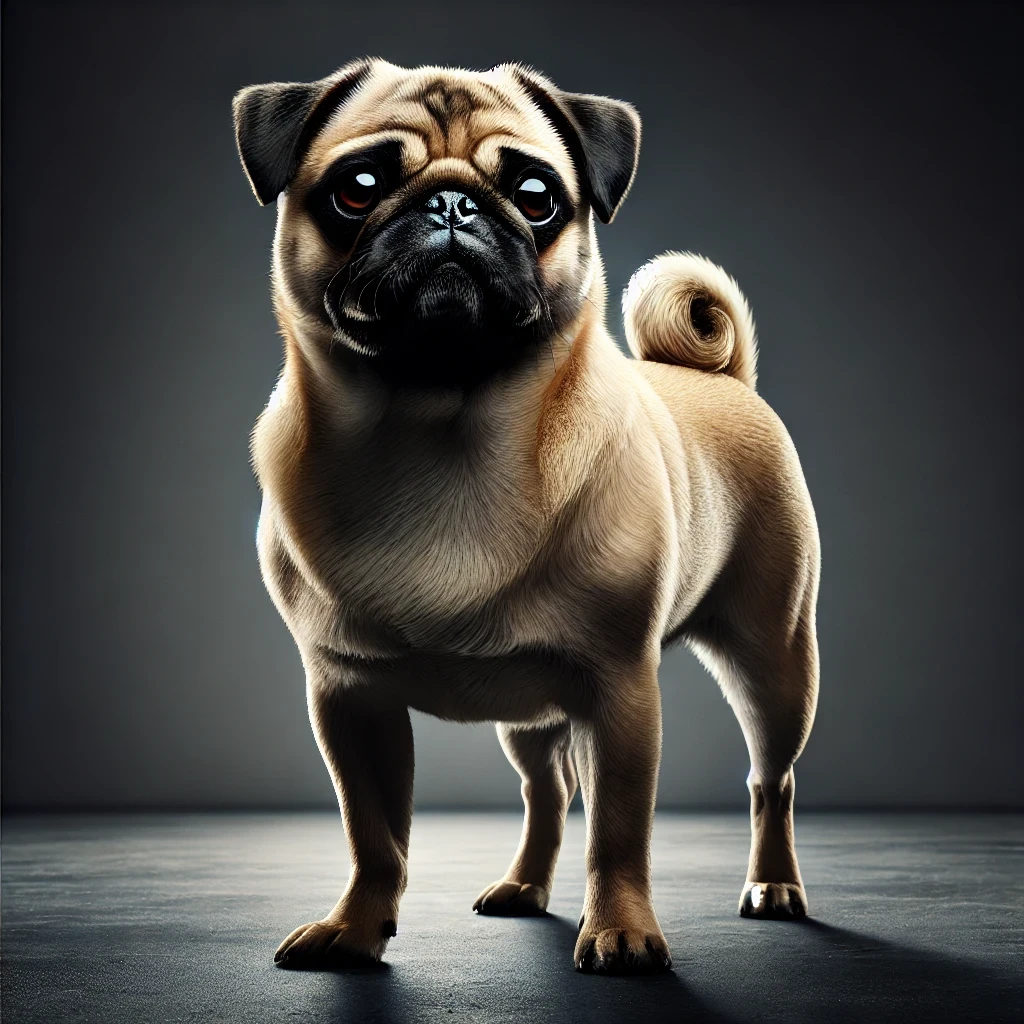Looking for a dog that’s equal parts charm, goofiness, and undying affection? Meet the Pug—a small breed with a big personality. With their wrinkled foreheads, round eyes, and constantly wagging curly tails, Pugs have become one of the most recognizable and adored companion dogs worldwide. Whether you’re a seasoned dog owner or researching your first pup, understanding the most important Pug dog breed facts will help you appreciate what makes this breed so special.

From their ancient royal beginnings to their present-day social media stardom, Pugs have held a unique place in human history. In this guide, we’ll break down their origin, personality traits, health considerations, training needs, and some quirky facts you may not know—all optimized to give you the full picture of this lovable breed.
A Brief History of the Pug
The Pug dog breed boasts a history as rich and distinctive as its appearance. These dogs were originally bred in ancient China more than 2,000 years ago. Favored by Chinese emperors during the Han dynasty, Pugs were not just pets—they were royalty. These compact canines lived pampered lives, often housed in palaces and guarded by soldiers. Some even had their own small residences and received the same kind of treatment as high-ranking human members of the imperial court.
The breed’s popularity eventually spread beyond China, especially when Pugs were brought to Tibet and Japan, where they were treasured by Buddhist monks. It wasn’t until the 16th century that Pugs made their way to Europe, thanks to Dutch traders from the East India Company. The Dutch referred to them as “Mopshond,” a term still used in the Netherlands today.
The Pug’s European debut was an immediate hit. They became the official dog of the House of Orange after a Pug reportedly saved the life of William the Silent by alerting him to an approaching attack. As the breed spread across Europe, it became a status symbol among the elite and was adored by monarchs, artists, and aristocrats alike.
Perhaps one of the most notable royal fans was Queen Victoria, who adored Pugs and even bred them herself. Her love for the breed helped cement its popularity across the British Empire. Today, Pugs are still known for their regal posture, charming nature, and people-focused temperament, earning them a beloved place in homes across the world.ir compact size, affectionate nature, and charming appearance made them a favorite among royalty and commoners alike.
Learn How Veterinary PPC Helps Dog Owners
Temperament and Personality – Pug Dog Breed Facts That Will Win You Over
One of the most heartwarming Pug dog breed facts is how much personality, charm, and loyalty these little dogs pack into such a compact frame. Often called “a lot of dog in a small space,” Pugs are beloved for their goofy expressions, lovable quirks, and the deep bonds they form with their families.
Whether you live in a cozy apartment or a busy household with kids and pets, Pugs are wonderfully adaptable—and almost always become the center of attention.
Explore Poogle Dog Breed Facts
Affectionate and Loyal Companions
Among the most well-known Pug dog breed facts is their deep affection for humans. Pugs are true companion dogs who thrive on closeness and constant interaction. They form strong emotional attachments and are happiest when they’re snuggled up next to their favorite person—whether it’s on the couch, in bed, or under your desk.
Expect your Pug to follow you around the house, stare at you lovingly during dinner, and offer snorts of approval (or disapproval) when they want your attention. They’re loyal to a fault and rarely leave your side.
Exceptionally Friendly and Sociable
If you’re looking for a friendly, people-loving dog, Pugs check every box. These pups tend to get along with:
- Children of all ages
- Strangers and visitors
- Other dogs and family pets
They don’t possess a strong guarding instinct, which means they’re more likely to greet guests with wags than warnings. Their friendly, relaxed nature makes them excellent pets for families, seniors, and first-time dog owners alike.

Read Scottish Terrier Dog Breed Facts
Playful, Clownish, and Full of Character
Another one of our favorite Pug dog breed facts is their sense of humor. Pugs are known as natural clowns, constantly making their humans laugh with silly antics, zoomies, expressive faces, and dramatic snores. They’re playful and curious—but without being hyperactive.
You might catch your Pug spinning in circles, head-tilting at funny sounds, or wrestling with a favorite toy like it’s a mortal enemy. This light-hearted spirit makes them especially fun to be around.
Stubborn Yet Trainable
Despite their eagerness to please, Pugs are known for being a little… stubborn. Training a Pug isn’t difficult, but it does require patience and consistency. While they’re intelligent and capable of learning quickly, they also have an independent streak and may test boundaries.
Training tips for Pugs:
- Use treats and positive reinforcement
- Keep sessions short, fun, and upbeat
- Avoid harsh discipline—they’re sensitive to tone
- Stay consistent with commands and expectations
Their love of food is your secret weapon—just watch out for overfeeding.
Velcro Dogs: They Crave Your Company
One of the lesser-known but important Pug dog breed facts is that these dogs do not tolerate being alone for long periods. Pugs are famously clingy and can suffer from separation anxiety if left alone too often. They thrive in homes where someone is around during the day, whether that’s a remote worker, a retired person, or a stay-at-home parent.
Without regular companionship, a lonely Pug may bark excessively, chew furniture, or become depressed.
Exercise Needs and Training
Pugs aren’t high-energy dogs, but regular activity is important to avoid weight gain and maintain good health.
Exercise tips:
- 30 minutes of daily activity is usually enough
- Gentle walks and short play sessions are perfect
- Avoid intense exercise, especially in hot weather, due to their short snouts and breathing issues
Training essentials:
- Start early with basic commands
- Use positive reinforcement—praise, treats, and repetition
- Keep training fun and short; Pugs get bored easily
Health and Lifespan
When exploring essential Pug breed traits, one cannot overlook their unique health profile. Pugs are generally loving and hardy dogs, but their brachycephalic (flat-faced) anatomy does present some specific challenges. Being informed about these concerns is key to giving your Pug a long, healthy life.
Common Health Issues in Pugs
🔹 Brachycephalic Obstructive Airway Syndrome (BOAS):
This condition affects many flat-faced breeds and can lead to snorting, loud breathing, and difficulty cooling down during exercise or heat. It’s important to avoid overexertion, especially in hot weather.
🔹 Obesity:
Pugs love food—and they’re not great at self-regulating. Their compact body and low energy level make them prone to weight gain, which can worsen respiratory, joint, and heart issues. Portion control, healthy treats, and daily exercise are essential.
🔹 Eye Injuries and Ulcers:
Thanks to their large, prominent eyes, Pugs are vulnerable to scratches, corneal ulcers, and dryness. Regular vet checkups and protective care (like avoiding rough play) help minimize risk.
🔹 Hip Dysplasia and Joint Problems:
Pugs can suffer from patellar luxation (kneecap dislocation) and early arthritis. Maintaining a healthy weight helps reduce joint stress.
🔹 Skin Fold Dermatitis:
Their adorable facial wrinkles can trap moisture, dirt, and bacteria, leading to irritation or infections. Clean folds regularly with a damp cloth and dry thoroughly.

With good preventive care, regular vet visits, a high-quality diet, and moderate exercise, most Pugs enjoy a lifespan of 12 to 15 years. Early detection and management of breed-specific issues can go a long way in ensuring your Pug lives a full and comfortable life.
Fun Dog Breed Facts About Pugs
No roundup of Pug dog breed facts is complete without highlighting the breed’s quirky and endearing history. These small dogs have entertained, comforted, and charmed people for centuries—and continue to do so today.
✅ Royal Origins:
Pugs were treasured by Chinese emperors, who often kept them in lavish surroundings with guards dedicated to their protection. They were true canine royalty.
✅ A Fistful of Cute:
The name “Pug” may have come from the Latin word pugnus, meaning “fist”, because their wrinkled faces resemble a clenched hand.
✅ Famous Pug Fans:
From Josephine Bonaparte’s Pug “Fortune” (who bit Napoleon!) to Doug the Pug, an Instagram celebrity with millions of followers, these dogs have always had a flair for the spotlight.
✅ They Snore—Loudly:
Pugs are notorious for their snoring, snorting, and wheezing. Their flat snouts make these sounds part of the package—and part of the charm.
✅ Tail Talk:
Pugs are known for their tight corkscrew tails, often curled over their backs. A looser tail might indicate illness or stress—so it’s a fun (and useful) way to monitor their mood.
Be Prepared For The First Vet Visit Puppy Guide
Is The Pug Breed For You?
In the world of companion dogs, Pugs hold a special place—offering the perfect blend of loyalty, humor, and affection all wrapped in a compact, wrinkly, and irresistibly charming package. They may be small in size, but their personalities are larger than life.
Whether you’re looking for a child-friendly family dog, a devoted lap companion, or a pet with a comedic streak and big heart, Pugs never disappoint. Their goofy antics, expressive faces, and gentle nature have earned them generations of fans—and it’s easy to see why.
We hope these Pug dog breed facts have given you deeper insight into this lovable breed’s history, temperament, health, and unique quirks. If you’re considering adding a Pug to your life, be prepared for:
- Endless snuggles on the couch
- A few noisy snores during nap time
- Comedic moments that brighten your day
- And an unbreakable bond of love and loyalty
For anyone seeking a companion that’s equal parts sweet, silly, and soulful, the Pug is truly one of a kind. 🐾
Visit Dog Breed Facts

